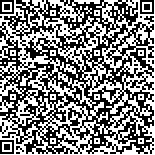下载中心
优秀审稿专家
优秀论文
相关链接
摘要

在建立不同降水云垂直结构模式的基础上,利用矢量微波辐射传扬模式进行空基云雨遥感的数值试验。结果表明:星载微波辐射计6.9GHz通道对降水云的冰层很不敏感,而对降水云校总液水含量(LWC)非常敏感;辐射亮温(Tb)随LWC呈单调变化关系;进一步考查这个频率下b的两个极化分量差△Tb(=Tbv—Tbh)和LWC的关系发现,不同云结构(对流云和层状云)对△Tb-LWC关系影响较小。研究分析表明,6.9GHz的v,h两个通道有可能用于遥感降水云的液水总量。
Liquid water conten(t LWC)of precipitating cloud is of vital importance in monitor severe storms and weather modification,also for research and application of climate change and water cycle within the ocean-land-atmosphere system. It is well known that passive microwave techniques have been used in global precipitation remote sensing with preliminary success,but for remote sensing of LWC it is still a challenging task. In this paper,the precipitating cloud models are established by using combined cloud dynamic model and the real observation data and verified with the real observation data obtained during TOGA COARE IOP. Based on these cloud models the numerical simulation study were made with vector radiative transfer model. It is found that the radiance of the channel 6.9GHz ( v or h)is very sensitive to the column liquid water content of the precipitating cloud,the brightness temperature Tb monotonously increase with LWC;The brightness temperature difference of v and h channels of 6.9GHz, ΔTb ( = Tbv - Tbh),is the best for remote sensing of LWC over ocean,ΔTb monotonously decrease with LWC,and the influence of different cloud type toΔTb-LWC is small;On the contrary,the brightness temperatures are very insensitive to the ice water content of upper part of precipitating cloud,it means that ice water content of the precipitating cloud is almost without contribution to the total water conten(t TWC)of precipitating cloud. Simulation results indicate that the channel of 6.9GHz on Satellite-borne radiometer can be used to estimate column liquid water content of precipitating cloud,for operational use we have to do the investigation of the retrieval accuracy in more details,especially to verify by real observation data.

